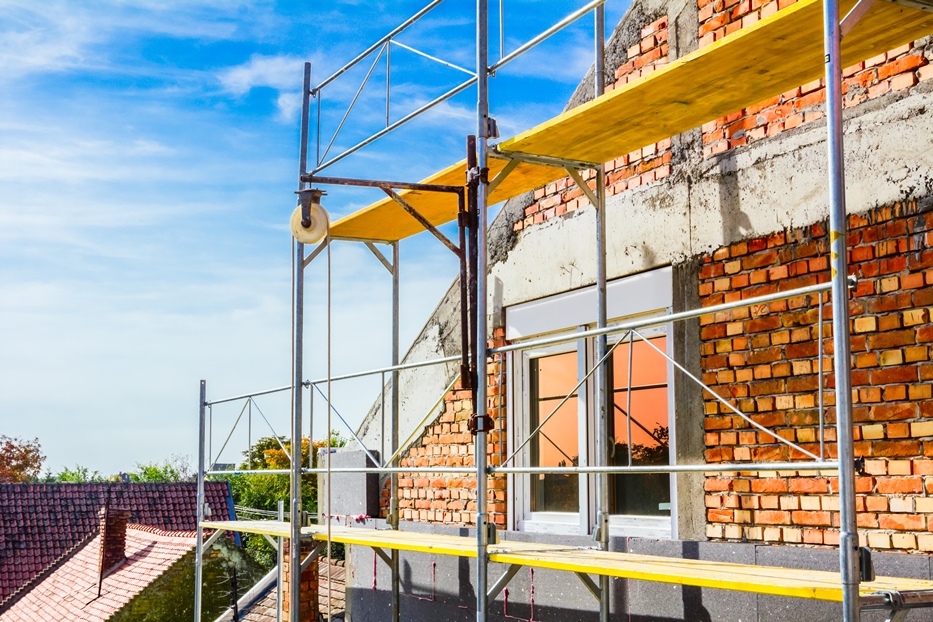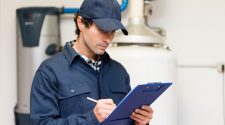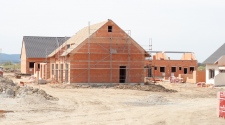Scaffoldings provide a good alternative to ladders in providing vertical movement. We use scaffoldings in construction, repair and renovation, alteration, and for routine maintenance. Scaffoldings give more working and movement space than ladders, and are also safer. It provides a platform for horizontal movement, as well as a place to set up the tools that you will use.
Accidents involving scaffoldings may happen due to the following: failure at attachment joints, inadequate fall protection, improper construction or setup of scaffolding, incorrect operating or working process, extreme environmental conditions (strong winds, extreme temperatures, etc.), improper personal protective equipment (PPE) of the worker, overloading of the scaffolding and falling materials.

Below are some of the safety guidelines in scaffolding setups, as mandated by the Occupational Safety and Health Administration (OSHA):
Identify the type of scaffolding that you need.
When you identify the type of scaffold that you will setup, you can also identify the protection that you need to have and the personnel that you will hire. Choose the right scaffold for the job intended. Review where the scaffolds are needed in your construction. Identify whether you will need a light, medium, or heavy-duty scaffold.
Setup and assembly of scaffold must be under the supervision of a trained and competent personnel.
Setup and erection of scaffolding must be supervised by a person with experience and training. This is to make sure that the installation will be done properly and according to the manufacturer’s specifications. The supervisor must be trained in the nature of the hazards, correct assembly and disassembly of a scaffolding, moving, repairing, and maintaining the type of scaffold used.
During setup, make sure that all planks, decks, toe boards, cross braces, locking devices and ties, suitable access and safety measures are secured and in their proper place.
Ensure proper Fall Protection systems are in place.
Fall protection includes guardrail systems and personal fall arrest systems. A Personal Fall Arrest system is usually made up of a full body harness, rope grab, lanyard, and independent vertical lifeline and lifeline anchorage. Guard rails must be between 38 inches and 45 inches above the platform surface. Below are some of the types of scaffold and the corresponding fall protection that are needed for them.
- a) Aerial lifts, Boatswain’s chair, float scaffold, needle beam scaffold, and ladder jack scaffold – Personal Fall Arrest System
- b) Crawling board, Single-point or two-point Suspension Scaffolds, Supported Scaffolds – Both a Personal Fall Arrest System and a Guard Rail
Ensure that the scaffold will not go beyond intended capacity.
The scaffold must be able to support its own weight and at least four times of the intended maximum load. The scaffold must not be loaded more than the rated and designed capacity, to avoid failure of its components, which can lead to accidents.
Each platform must be planked and decked properly.
Each platform of the scaffolding must be planked and decked as fully as possible, with the space between the platforms not exceeding one inch.
Avoid mixing components from one manufacturer with another.
This is to ensure that the scaffold components fit together and that the designed and rated load capacities are maintained.
Ensure that the scaffolding maintains a safe distance from power lines.
For insulated lines carrying less than 300V, a minimum distance of 3 feet must be maintained. For insulated lines carrying 300V to 50kV, the minimum clearance should be 10 feet. For insulated lines carrying more than 50kV, the minimum clearance is 10 feet plus 0.4 inches for each kV exceeding 50.
For uninsulated lines carrying less than 50kV, the minimum clearance should be 10 feet. For more than 50kV, the same computation with that of insulated power lines apply.
Safety is of utmost priority in every construction site. Aside from ensuring that each personnel has their PPE, structures and tools needed in the construction must also be built properly and according to standards. Safety is everyone’s responsibility and must be taken seriously. Rent your scaffolding needs only from a reputable construction equipment rental company.
Written by Lindsey Rentals. Lindsey Rentals offers the best equipment rentals in Columbia, MO.
















